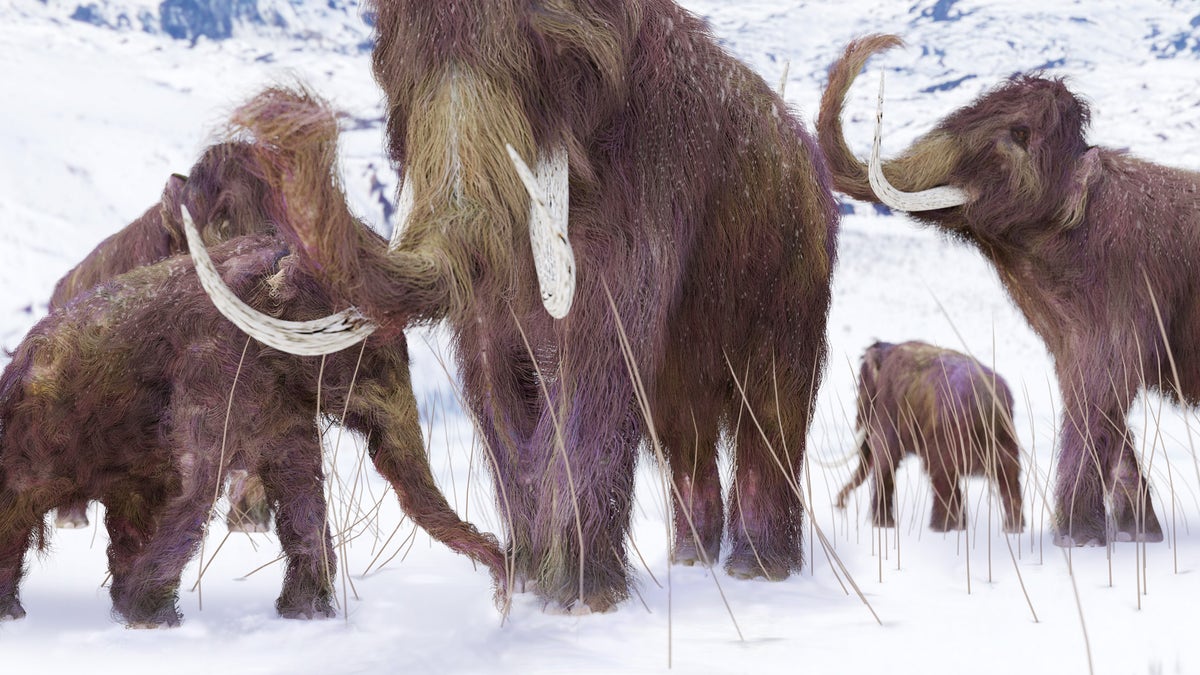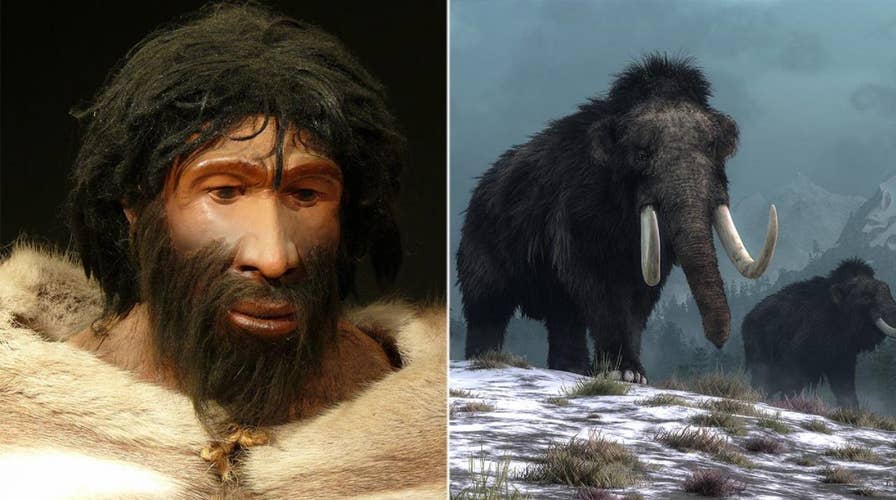A new study suggests that woolly mammoths and Neanderthals may have shared genetic traits
A new study suggests that woolly mammoths and mankind's ancestors, the Neanderthals, may have shared genetic traits.
Extinct for thousands of years, the woolly mammoth continues to fascinate humanity, as the prospect of eventually reviving the species is pondered among the scientific community. Now, a new study suggests that the giant creatures and mankind's ancestors, the Neanderthals, may have shared genetic traits.
The study, published by researchers at Tel Aviv University, suggests that because of their shared geography, mammoths and Neanderthals likely had similar molecular characteristics that allowed them to adapt to their harsh environmental surroundings.
"Neanderthals and mammoths lived together in Europe during the Ice Age. The evidence suggests that Neanderthals hunted and ate mammoths for tens of thousands of years and were actually physically dependent on calories extracted from mammoths for their successful adaptation," said professor Ran Barkai in a statement.
COULD REVIVING WOOLLY MAMMOTH GENES FIGHT THE EFFECTS OF GLOBAL WARMING?
Barkai continued: "Neanderthals depended on mammoths for their very existence. They say you are what you eat. This was especially true of Neanderthals; they ate mammoths but were apparently also genetically similar to mammoths."
Published in the scientific journal, Human Biology, the research looked at the three cases of varying genes and alleles – alternate forms of genes that stem from mutations – that are generally associated with adapting to colder climates and found that there are enough similarities between the two species.
"Our observations present the likelihood of resemblance between numerous molecular variants that resulted in similar cold-adapted epigenetic traits of two species, both of which evolved in Eurasia from an African ancestor," Tel Aviv University professor and the study's co-author, Meidad Kislev, explained. "These remarkable findings offer supporting evidence for the contention regarding the nature of convergent evolution through molecular resemblance, in which similarities in genetic variants between adapted species are present."
Kislev continued: "We believe these types of connections can be valuable for future evolutionary research. They're especially interesting when they involve other large-brained mammals, with long life spans, complex social behavior and their interactions in shared habitats with early humans."
FROZEN WOOLLY MAMMOTH FOUND IN SIBERIA COULD BE NEW SPECIES, RESEARCHERS SAY
"It is now possible to try to answer a question no one has asked before: Are there genetic similarities between evolutionary adaptation paths in Neanderthals and mammoths?" Barkai added. "The answer seems to be yes. This idea alone opens endless avenues for new research in evolution, archaeology and other disciplines."
SCIENTISTS WANT TO CLONE THIS EXTINCT, FROZEN PREHISTORIC HORSE
Woolly mammoth advances
There has been renewed vigor recently for reintroducing the woolly mammoth into the wild after CBS' "60 Minutes" interviewed Russian scientist Sergey Zimov. The 63-year-old Zimov is attempting to recreate the temperatures of the last Ice Age and help combat climate change, possibly with the help of mammoths.
As part of his plan for Pleistocene Park, a nature preserve in Siberia, Zimov wants to stop or slow the carbon dioxide being released from the permafrost in the area, which he believes could be catastrophic to the planet. "This is a warning to the world because organic matter in the permafrost, plants and animals, has been frozen for hundreds of thousands of years," Zimov told the news outlet. "As it thaws, microbes consume that organic matter and release carbon dioxide and methane, greenhouse gases which contribute to a warmer climate."

An illustration of a family of Woolly Mammoths grazing on what is left of the grasses as winter approaches in this ice age scene. (Credit: iStock)
Zimov hopes to reintroduce animals to the area, including bison, lions, horses and potentially mammoths, with the help of Harvard professor George Church, if he gets his way.
Zimov's son, Nikita, was asked if the mammoth was needed for the project, to which he replied: "It's like, do you need your right arm to live and do your job? No, you don't need it, but with your arm, you will do it better. So, same with mammoth."
Although the mammoth, which went extinct more than 4,000 years ago due in part to the changing climate and human hunters, is not likely to return anytime soon, there have been some recent advances.
Last month, researchers were able to implant cells from a woolly mammoth that died 28,000 years ago into mouse cells and have them show "signs of biological [activity]." However, the researchers cautioned that it's unlikely the extinct creatures will walk the Earth again anytime soon.
CAN THE LONG-EXTINCT WOOLLY MAMMOTH BE CLONED?
The research, published in Scientific Reports, details how a well-preserved woolly mammoth, found in 2011 in the Siberian permafrost, has begun to show some activity.
"This suggests that, despite the years that have passed, cell activity can still happen and parts of it can be recreated," Kei Miyamoto, a member of the team that conducted the work, said in an interview with AFP.
Despite Miyamoto's comments, some researchers are attempting to bring the mammoth back with the use of gene editing, including the controversial CRISPR gene editing tool.
Church, a Harvard and MIT geneticist and co-founder of CRISPR is the head of the Harvard Woolly Mammoth Revival team, a project that is in attempting to introduce mammoth genes into the Asian elephant for conservation purposes.
CLICK HERE FOR THE FOX NEWS APP
"The elephants that lived in the past — and elephants possibly in the future — knocked down trees and allowed the cold air to hit the ground and keep the cold in the winter, and they helped the grass grow and reflect the sunlight in the summer," Church told Live Science in May 2018. "Those two [factors] combined could result in a huge cooling of the soil and a rich ecosystem."

